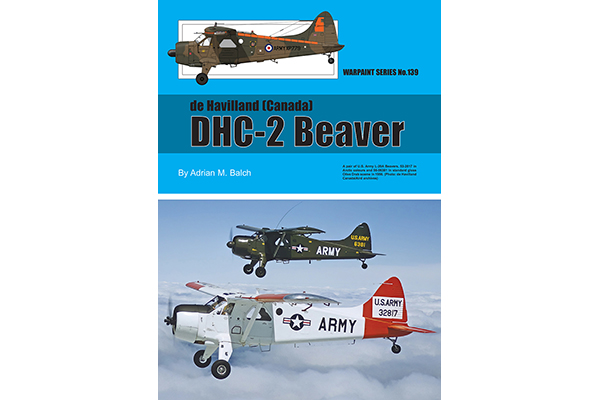
De Havilland (Canada) DHC-2 Beaver
By Chris Banyai-Riepl
Warpaint Series No. 139
Author: Adrian M. Balch
Publisher: Guideline Publications
ISBN: 978-1-739219048
Binding: Softcover
Pages: 52
The de Havilland DHC-2 Beaver is probably one of the most iconic light utility aircraft, first flying in 1947 and still in the skies today. Its rugged construction and short field performance made it a preferred aircraft for military operations, government services, and civilian usage around the world. This title from Warpaint covers the military & government operations of the Beaver around the world, including later turboprop conversions.
Like other titles in the Warpaint Series, this book starts at the beginning, which for the Beaver is an interesting one that saw de Havilland Canada start moving into creating its own designs. The need for a sturdy, reliable bush plane in the large, empty regions of Canada was quite high, so special attention was placed on both strong construction and easy loading of people and supplies. After almost no changes from the prototype, the production DHC-2 took to the air in the late ‘40s. While it immediately found great popularity amongst bush pilots, it was not long before the militaries of the world took notice.
And took notice they did. The US military ordered nearly a thousand Beavers, and other nations around the world followed suit (though nowhere near that large of orders). All told, when production ended in 1967 (due not to lack of demand but rather DHC’s shift towards wanting to build more commercial designs), nearly 1,700 Beavers were built. Beavers were on wheels, skis, and floats, and are one of the few planes to have actually flown on all seven continents. Argentina, Australia, Austria, Cambodia, Chile, Colombia, Dominican Republic, Finland, France, Ghana, Greece, Haiti, Indonesia, Iran, Kenya, Laos, Netherlands, New Zealand, Oman, Pakistan, Panama, Paraguay, Peru, Philippines, South Korea, South Vietnam, South Yemen, Taiwan, Thailand, Turkey, Uganda, United Kingdom, United States, Yugoslavia, and Zambia are all discussed as operators in this book. An interesting tidbit, while this list is indeed quite long, there is a notable omission: de Havilland Canada’s own local military, the Canadian Air Force, never flew the Beaver. In government usage, though, and private hands, the Beaver was and still is a common sight at Canadian airports across the country.
Given such a vast range of operators, and over 75 years of service (and continuing), one cannot expect this book to be a comprehensive and detailed history of the DHC-2. It does do an excellent job of describing its origins and touches on its operations in militaries around the world, and the accompanying photos really highlight just how varied the operational environments were for this plane over the decades. The color profiles do an excellent job of showing the highly varied and often colorful markings worn by the Beaver as well, again just scratching the surface but still very impressive.
For those wanting an excellent introduction to the de Havilland Canada Beaver, look no further than this title. It covers all the bases and should whet your inspirational appetite for building a model of this iconic STOL aircraft.
